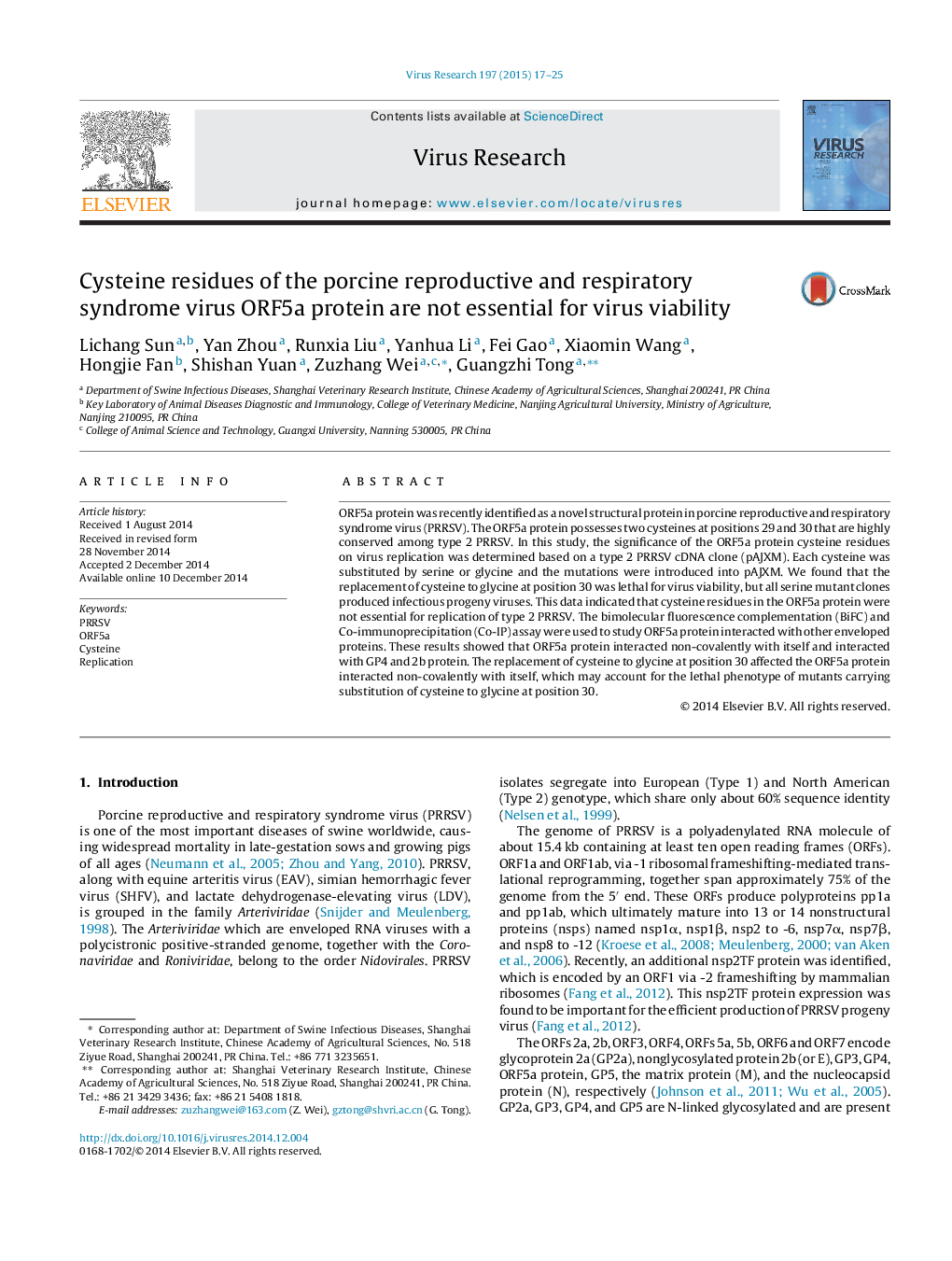| Article ID | Journal | Published Year | Pages | File Type |
|---|---|---|---|---|
| 3428295 | Virus Research | 2015 | 9 Pages |
•Cysteine residues in the ORF5a protein are not essential for replication of type 2 PRRSV.•ORF5a protein interacted non-covalently with itself.•ORF5a protein interacted non-covalently with GP4 and 2b protein.
ORF5a protein was recently identified as a novel structural protein in porcine reproductive and respiratory syndrome virus (PRRSV). The ORF5a protein possesses two cysteines at positions 29 and 30 that are highly conserved among type 2 PRRSV. In this study, the significance of the ORF5a protein cysteine residues on virus replication was determined based on a type 2 PRRSV cDNA clone (pAJXM). Each cysteine was substituted by serine or glycine and the mutations were introduced into pAJXM. We found that the replacement of cysteine to glycine at position 30 was lethal for virus viability, but all serine mutant clones produced infectious progeny viruses. This data indicated that cysteine residues in the ORF5a protein were not essential for replication of type 2 PRRSV. The bimolecular fluorescence complementation (BiFC) and Co-immunoprecipitation (Co-IP) assay were used to study ORF5a protein interacted with other enveloped proteins. These results showed that ORF5a protein interacted non-covalently with itself and interacted with GP4 and 2b protein. The replacement of cysteine to glycine at position 30 affected the ORF5a protein interacted non-covalently with itself, which may account for the lethal phenotype of mutants carrying substitution of cysteine to glycine at position 30.
